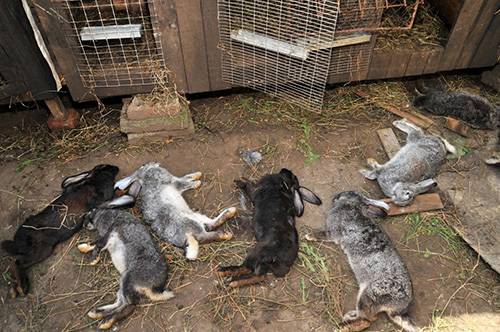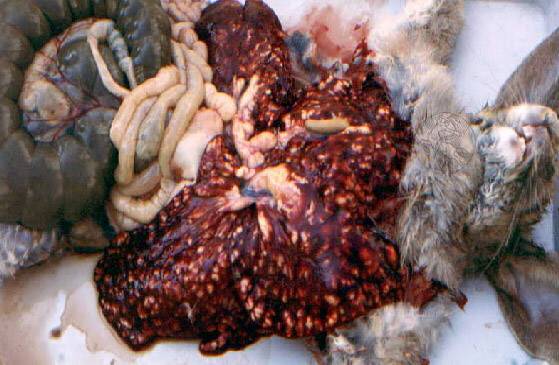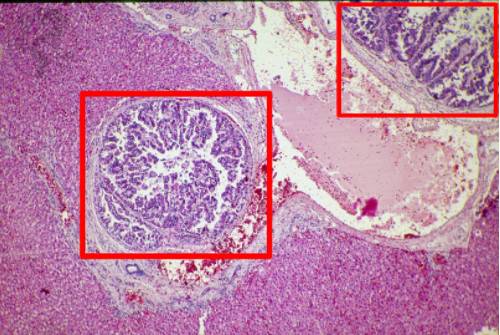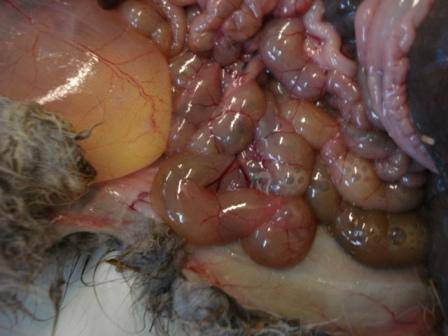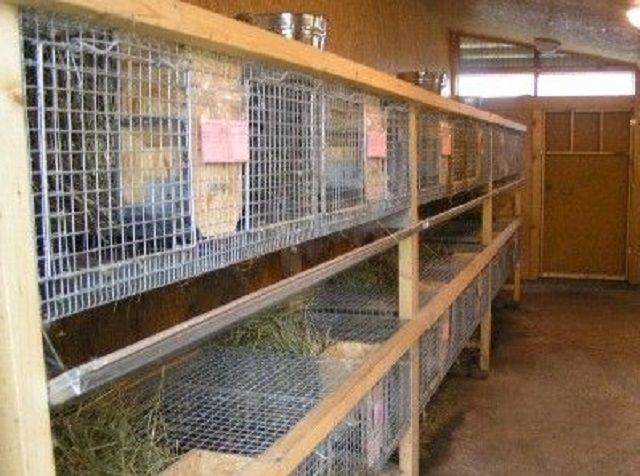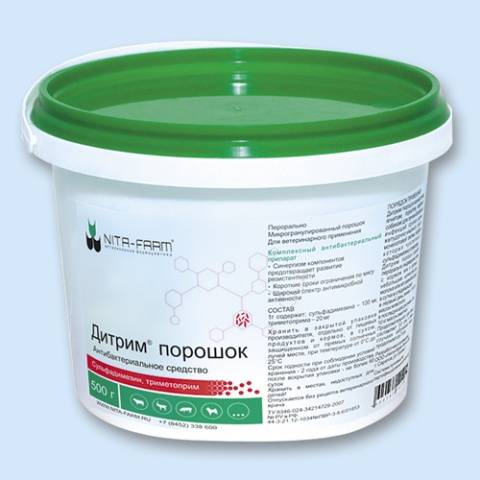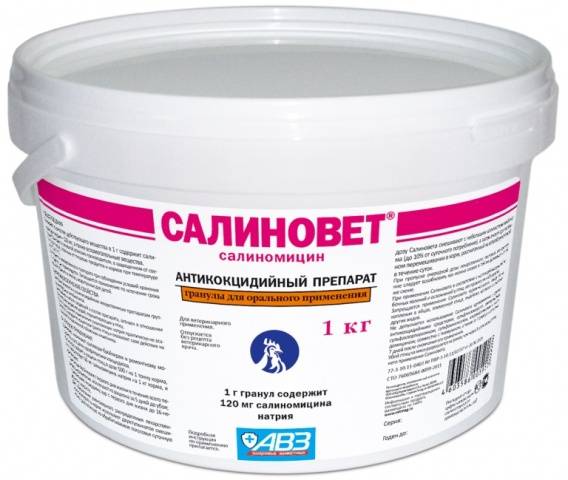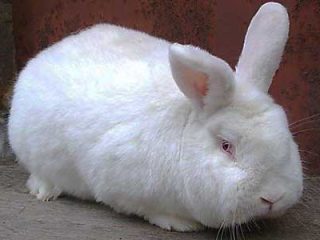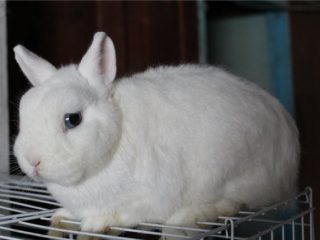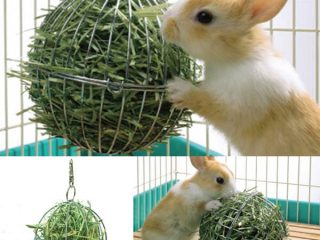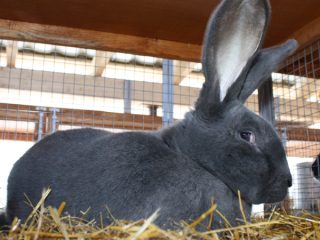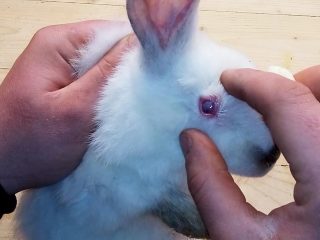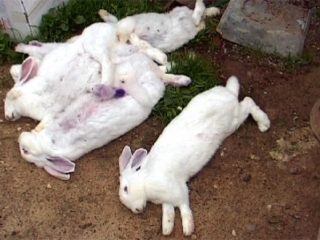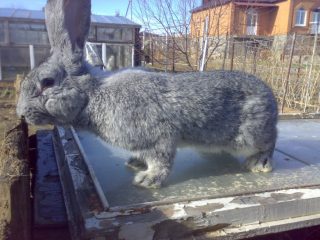Content
The main problem in rabbit breeding is considered to be bloating in rabbits, since in these cases animals die in massive quantities. But bloating is not a disease. This is a sign of gastrointestinal problems. Bloating can be caused by a non-contagious cause, such as fermentation of food in the stomach of a particular animal, or it can be a sign of an infectious disease, one of which is rabbit eimeriosis, caused by bacteria belonging to the coccidia order.
Coccidiosis in rabbits causes 11 types of eimeria, of which one affects the liver, causing hepatic coccidiosis. The most common form of the disease is the development of intestinal and hepatic coccidiosis at the same time. Like any other coccidia, eimeria in rabbits get the opportunity to harm when animals weaken their immunity. Weakening of immunity is promoted by:
- crowded content;
- unsanitary conditions in the rabbitry;
- high humidity;
- animals of different ages in one group;
- poor quality feed;
- excess protein in the feed;
- unbalanced diet;
- the presence of animal feed in the diet;
- other factors that reduce the body's resistance to disease.
For heat-loving rabbits, winter frosts can also be such factors, and rabbits in pits can become infected with coccidia from rats or their own feces, since no one ever cleans holes in pits. It's not even about the negligence of the owners, it's just that you can't get through these holes.
A video that clearly shows why eimeriosis breaks out in rabbits in private households.
But isosporosis is a disease of predatory animals: dogs and cats, although it is also caused by eimeria. Only not with those eimeria that parasitize in rabbits.
Features of the life cycle and habitat of eimeria
Aymeria, which cause coccidiosis in rabbits, are specific to this species of animals, you do not need to worry that coccidiosis of chickens will spread to rabbits. Only general unsanitary conditions in the courtyard can "spread" to them. Eimerian oocysts prefer cool weather and high humidity; in the heat and when dried, they quickly die. Therefore, outbreaks of coccidiosis in rabbits are observed in the spring-summer period, although to a lesser extent coccidiosis can walk in the rabbitry all year round.
Sources of infection with coccidiosis are recovered animals, which began to excrete oocysts into the external environment along with feces, and lactating rabbits. Due to unsanitary conditions and the ingress of contaminated droppings into water and feed, coccidiosis is transmitted to animals that have not yet been ill.
Symptoms of different types of coccidiosis in rabbits
The incubation period of coccidiosis is 4 - 12 days. The course of coccidiosis can be acute, subacute and chronic. There are three types of disease: intestinal, hepatic and mixed. On farms, a mixed type of coccidiosis is most often observed. Rabbits are most susceptible to coccidiosis up to 5 months.
Signs of mixed coccidiosis. With a mixed type of coccidiosis in sick rabbits, depression is observed. Animals prefer to lie on their stomachs, not interested in food. Rapid exhaustion, yellowness of the mucous membranes. The belly is swollen, the rabbits are in pain. There is diarrhea with mucus and blood. Frequent urination and profuse discharge from the mouth and nose.Dull coat. Muscle cramps in the back, limbs and neck may appear. Convulsions appear before the close death of rabbits in acute and subacute coccidiosis, which lasts from 3 to 6 days. The duration of coccidiosis in chronic course is up to 4 months. In this case, the lag in the growth of sick rabbits from healthy brethren becomes noticeable.
Symptoms of hepatic coccidiosis in rabbits... The disease is caused by the simplest parasite Eimeria stiedae. With "pure" hepatic coccidiosis, the duration of the disease is from 1 to 1.5 months. Signs of the intestinal form of coccidiosis are poorly expressed. An indication of liver damage is the yellow color of the mucous membranes characteristic of hepatitis. Rabbits lose weight quickly. As a result, animals die severely emaciated.
At an autopsy, the liver is 5 to 7 times larger than usual. On the surface of the organ, white nodules ranging in size from a grain of millet to a pea and white "threads" are visible, which are flush with the surface. When the nodule is cut, a creamy substance is found inside - an accumulation of eimeria. There are enlargements of the connective tissue. The bile ducts are dilated and thickened ..
In the photo below, microscopic damage caused by the parasite.
Intestinal coccidiosis... In rabbits aged 3 to 8 weeks, this type of disease occurs in an acute form. Especially if the rabbits caught an infection at the time of transition to green grass. In a rabbit, diarrhea alternates with constipation. The coat is matt, tousled. The abdomen is enlarged and saggy. Tympania may be observed.
In some rabbits with eimeriosis, convulsions may occur, falling on the side with the head thrown back onto the back, floating movements of the paws. If you do not take measures for treatment, the rabbit dies on the 10th - 15th day of illness.
At autopsy, the intestinal mucosa is strewn with white plaques, similar to those found in the liver. The mucous membrane is inflamed, red. The intestinal contents are liquid, with gas bubbles.
The photo shows that in the intestines of the rabbit there are not normal food masses, but a fermenting liquid that releases gas.
Diagnosis of coccidiosis
When establishing a diagnosis, coccidiosis of rabbits is differentiated from listeriosis and pseudotuberculosis. When making a diagnosis, the state of the farm, where the sick rabbit came from, the symptoms of the disease, the data of pathological anatomy and laboratory studies of feces or pathological material, are taken into account.
At postmortem examination, a rabbit patient with coccidiosis reveals:
- intestinal hyperemia;
- nodules in the liver;
- bloating of the intestines;
- liquid contents of the gastrointestinal tract.
After an accurate diagnosis, treatment is prescribed.
How to treat coccidiosis in rabbits
Immediately upon signs of the disease, without waiting for the diagnosis, the animals are placed in bright, dry, well-ventilated rooms. They are kept in cages only with a mesh floor to minimize contact of rabbits with feces. There is only high quality feed.
After an accurate diagnosis, the veterinarian chooses a treatment regimen. Treatment of coccidiosis in rabbits, like any other animal, is carried out with coccidiostatics and antibacterial drugs. Antibiotics are also used.
Preparations for coccidiosis for rabbits in each region may be different, so the treatment regimen will need to be built depending on the availability of the medicine in the nearest veterinary pharmacy.
Several treatment regimens for coccidiosis in rabbits:
- Phthalazole 0.1 g / kg, norsulfazole 0.4 g / kg at a concentration of 0.5% are added to water;
- Sulfapyridazine 100 mg, at the same time mnomycin 25 thousand units / kg, chemcoccid 30 mg / kg in double courses of 5 days with an interval of 3 days;
- Trichopolum twice a day, 20 mg / kg in feed for 6 days.If necessary, repeat the course after 3 days;
- Salinomycin 3-4 mg / kg;
- Ditrim 1 ml / l of water for 5 days;
- Biofuzol or nifulin 5 g / kg feed 7 days;
- Sulfadimethoxine 200 mg / kg on the first day and 100 mg / kg for the next 4 days;
- Furazolidone 30 mg / kg 2 times a day for 10 days.
Some of the rabbit breeders tried to use levomiticin and claimed that he managed to cure the rabbits. But here it is necessary to take into account that the diagnosis was determined "by eye" by the breeder himself and there is no certainty that his animals had just coccidiosis.
The "home-made" vaccine is the simultaneous use of coccidiostatics and providing rabbits with contact with oocyst-infected Eimeria droppings. It is clear that here it will not be possible to accurately calculate the dose of eimeria oocysts, and such a "vaccination" is, in fact, "Russian roulette".
Against the background of the impossibility of vaccinating animals against eimeriosis, the prevention of coccidiosis in rabbits becomes very important.
How to prevent coccidiosis and what it includes
First of all, the prevention of disease in rabbits is strict adherence to the rules of veterinary and sanitary hygiene. The room of the rabbit farm, cages, equipment should be regularly fried with a blowtorch.
Aymeriy could rightfully say that you can't take them with your bare hands, and even with a blowtorch. But it is quite possible to thin out the number of eimeria oocysts on the cell grid.
Washing with disinfectants in the case of eimeria oocysts is not very effective. Feces are removed daily.
After weaning, rabbits are kept in clean, dry rooms in cages with a mesh floor. From the 3rd week of life, all rabbits are given antibiotics and vitamin C.
Opponents of antibiotics are trying to fight coccidiosis in rabbits with "proven folk remedies" by adding iodine and lactic acid to the water.
It is believed that the "iodine" solution causes the oxidation of proteins not processed by the stomach when feeding animals with high-protein feed. But in a healthy body without hormonal disruptions, these functions must be performed by the thyroid gland, releasing the required amount of iodine. An artificial malfunction of the pancreas in a rabbit is excused only by the fact that the life of an animal is usually 4 months.
Lactic acid is a good remedy, but it does not kill eimeria. It just stops fermentation in the intestines.
Treatment and prevention of rabbit coccidiosis
Is the meat of sick rabbits edible?
Eimeria, parasitizing in rabbits, are not contagious to humans. At least not yet mutated. The meat of slaughtered rabbits can be eaten, but if the rabbits have been treated or prevented from coccidiosis, you need to check the instructions for the drug. You can eat meat only after removing the medication from the animal's body. For each medication, these terms are different and they are indicated in the annotations.
Conclusion
The main measures to prevent the appearance of coccidiosis in the rabbitry are strict hygiene. If the symptoms were recognized on time and treatment of coccidiosis was started immediately, then there is a chance to save a significant number of livestock.
